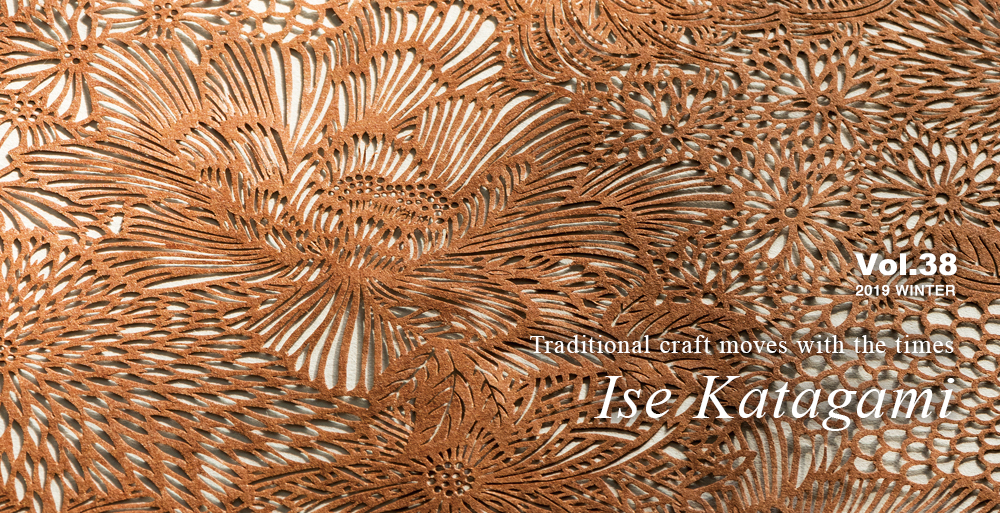
Traditional craft moves with the times
Ise Katagami
Ise Katagami has built its history over more than 1,000 years, functioning as paper stencils for dyeing textiles. Extremely skilled craftsmen elaborately carve delicate patterns.
They are highly regarded around the world as traditional crafts that can tell Japanese beauty. On the other hand, demand for paper stencils continues to decrease as people lose interest in traditional Japanese dress and printing technology advances.
The Shiroko area in Suzuka-shi, Mie prefecture is the birthplace of Ise Katagami, and almost all paper stencils are manufactured there.
We saw three craftsmen there who care for their local culture, which has been passed down through a combination of the local people’s lifestyle and the climate, and who pursue the possibilities for creating new value.
[01]
Hajime ITO, a Hikibori craftsman
Spent 60 years carving his unique lines
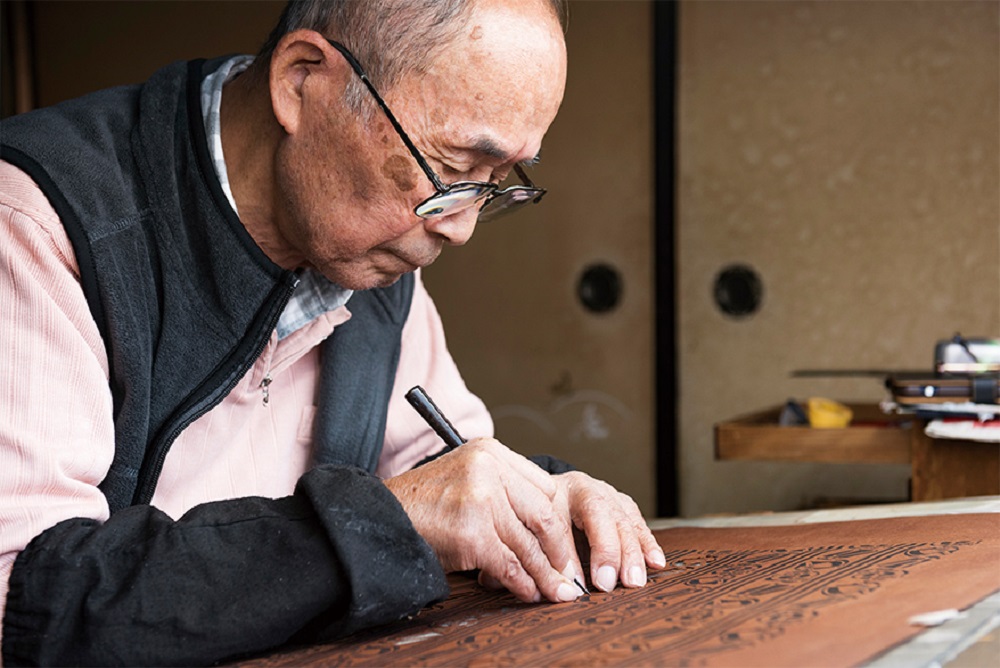
Mr. Hajime ITO, a Hikibori craftsman
Keeps carving lines that convey a sense of warmth in a way that machines cannot
Hajime ITO was born and raised in the birthplace of Ise Katagami, the Shiroko area in Suzuka-shi, Mie prefecture. Using a small chisel, the craftsman carves patterns for kimono or other materials on a sheet of katajigami paper (a sheet of paper to carve patterns on) that is made by processingJapanese paper or washi.
“In the past, there were about 300 craftsmen. That number has now dropped to about 20. Few people actually work every day. Most of them are in their 60s or older.” Mr. Ito broke into the world of craftsmen at the age of 15. He became an apprentice to his father, who was also a craftsman. He has spent 60 years honing his skills. “When I was young, I worked from 8:30 in the morning until midnight. In those days I often worked all night.
We received orders for kimono, wrapping cloth, bedclothes, ties and other items. Today, we receive far fewer orders because of the availability of photo stencils (silk screen).”
The carver manually adds fine patterns by following the well-honed senses of his fingertips and using a small chisel that he has also processed. We asked him about the necessity of ensuring that his technique is passed down. “My technique will disappear when I die. That’s okay,” Mr. Ito said. “It is possible to teach the basics, but it is impossible to communicate the delicate senses. You cannot acquire a technique unless you learn from your master’s work or paper stencils that have been completed and think and repeat practicing.”
The carving of Ise Katagami can be divided into four techniques: hikibori (shimabori or stripe-carving), tsukibori (push cutting), dogubori (punching or stubbing with a tool) and kiribori (drill cutting).
A craftsman chooses one or two of these techniques in which to specialize, and endeavors to master it. “In the past, I specialized in tsukibori. I now do hikibori. Each craftsman has something that characterizes them, and I place importance on ensuring that each of the lines I draw has a sort of softness. Of course I carve the patterns carefully.
Intentionally adding a bit of ‘curve’ generates a sense of warmth. This is where the advantage of manual carving lies, and it cannot be replicated with machinery to determine whether the pattern have its own taste or not.”
“I myself don’t think this is a great technique,” says Mr. Ito. Marked by humbleness and sincerity, his manual work continues to bring a diverse range of beauty with profundity and enrichment.
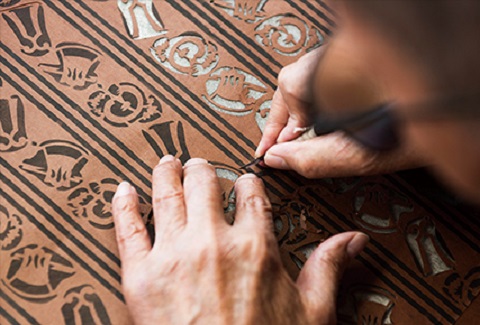
The carving work, performed on a sloping desk called an “ateba,” may take more than ten hours a day.
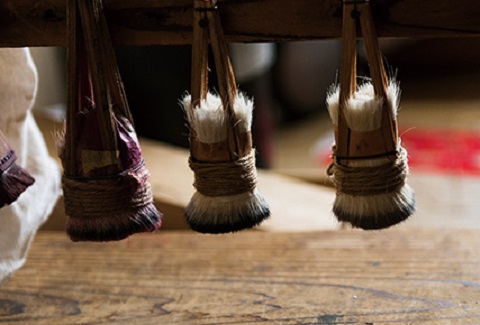
The brushes are used to print patterns with ink.
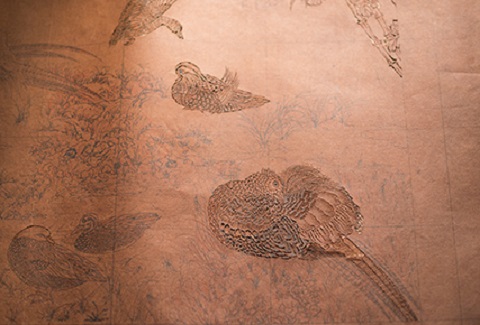
In a continued effort to improve his skills, Mr. Ito practices drawing and carving a pattern even in his break time.
[02]
Atsushi KIMURA,Terakoya Isekatagami
Seeking to develop a new tradition with nostalgia for his hometown
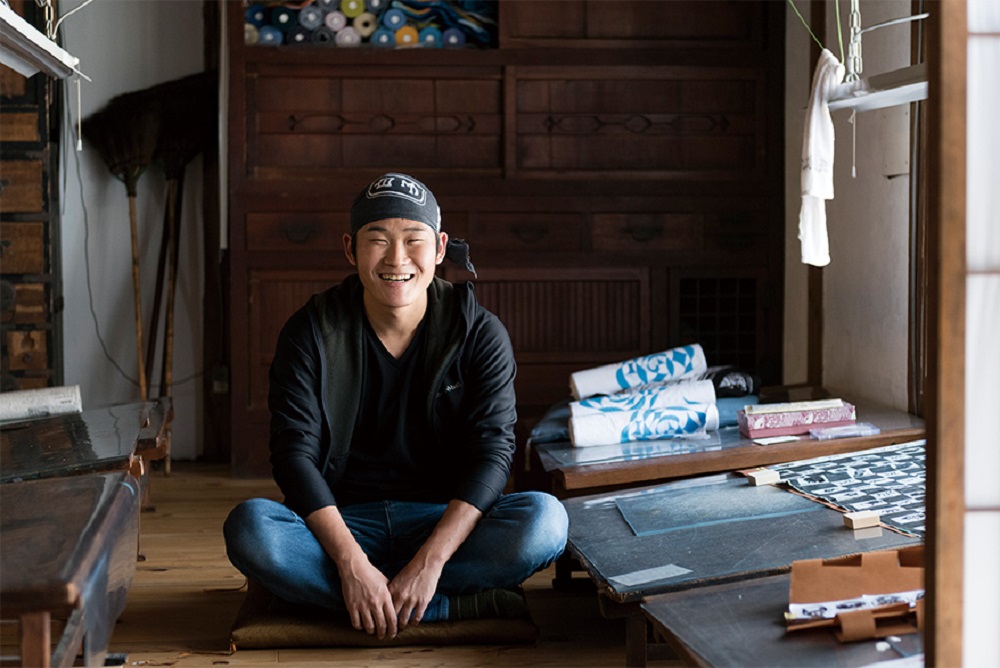
Mr. Kimura welcomes participants with his friendliness and way of talking. His ability to provide advice from a creator’s perspective is another reason for the good reputation of his workshop.
Build a profitable town where textile creators gather
Old latticed houses and streets with full of atmosphere remain in the Shiroko area. An old private home in the corner of this area is an outstanding sign of its long history.
Atsushi KIMURA, a young craftsman who makes paper stencils, opened the guest house named “Terakoya Isekatagami” in May 2017, which provides visitors with experience the practices of craftsmanship. In the apprenticeship course, they learn the basics of Ise Katagami through three different exercises by staying for five days, or commuting six days without overnight stay. In the original production course, they make an original yukata (informal cotton kimono), tenugui (towel) and cloth. In the one-day experience course, visitors carve a given pattern in the course. The course opened only year and a half ago, but there are already nearly 150 participants in the courses. Ninety percent of them are women, and nearly half choose a longer course, the apprenticeship course.
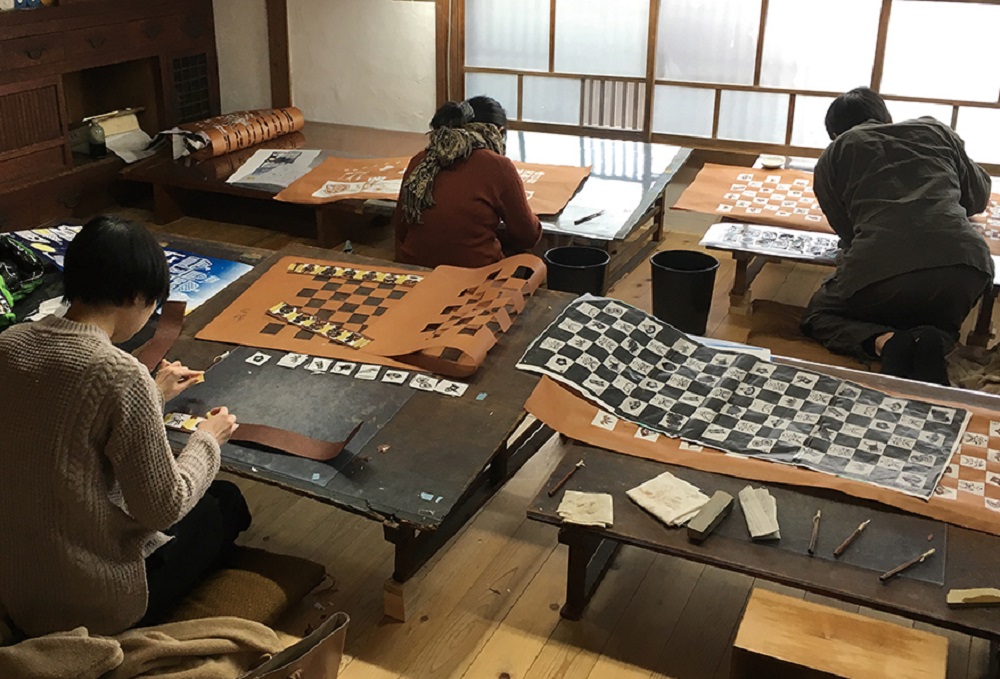
Participants in the apprenticeship course practice.
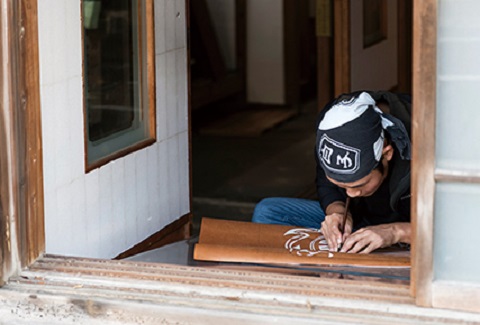
Mr. Kimura carves lines onto a stencil by the window. He speaks about his wish to bring back the view that he could always see from the street as a child.
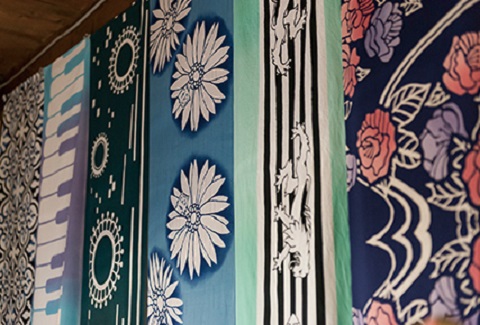
One of the available options involves using a carved stencil to dye a piece of tenugui cloth or other materials.
“One of the aims of starting Terakoya was to develop my ‘sideline apprentices.’ They undertake their main jobs on weekdays and work for Ise Katagami only during the weekends. This enables it to disperse their financial risk. By applying the knowledge and awareness they acquire in their primary jobs to Ise Katagami, they can create new value.” While working as a paper stencil craftsman, Mr. Kimura extends the realm of his activities to the production of images and websites, among many other things. He practices a new way of working in which a secondary job has a positive impact on one’s primary job.
Born and raised in Shiroko, Mr. Kimura moved to Tokyo when he went on to university. After graduating, he joined an apparel company, then left it and returned to his hometown. Mr. Kimura noticed a significant change in the landscape. “In my childhood, I could always see paper stencil craftsmen working by the windows. In the past, there were nearly a thousand craftsmen around. Today, most of them have quit their jobs due to aging, and the town is no longer what it used to be. I loved the landscape of Shiroko in those days, so I tried to find good ways of making the town what it had been. I planned to return to my hometown and develop new products and services using Ise Katagami, but the availability of experienced, active craftsmen was limited. I thought, the way I trains them. That’s how I started the Terakoya.” Mr. Kimura had never aspired to become a craftsman. To learn the difficulties of a craftsman’s job, he became an apprentice with Mr. Hajime Ito, a friend of his grandfather who was a craftsman. During his two-year apprenticeship, he raised funds through crowd-funding and renovated an old private home before obtaining tools from a local craftsman and opening the Terakoya.
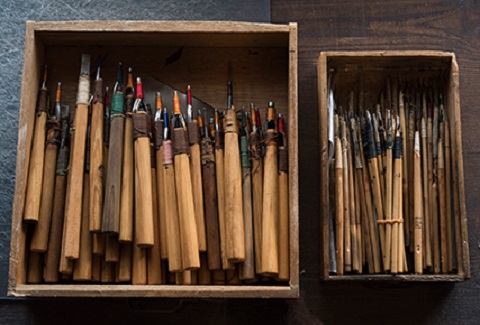
The small chisels and other tools were previously used by a craftsman.
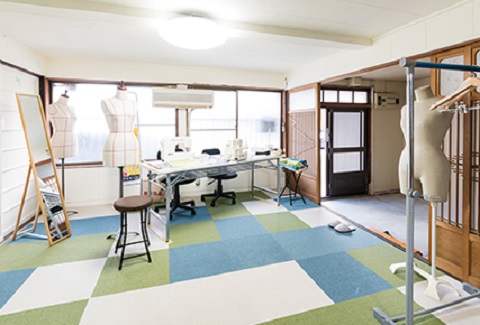
Mr. Kimura opened the apparel co-working space in November. It is fully equipped with sewing machines and other essential machines.
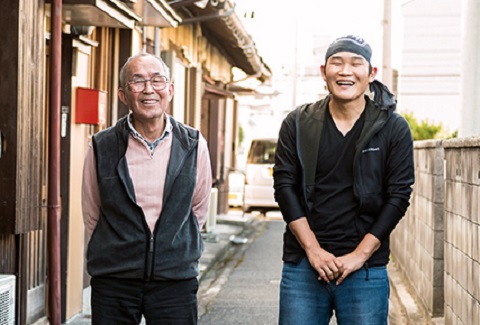
His mentor, Mr. Ito, was a friend of his grandfather and also have a long time relationships with Mr. Kimura.
Mr. Kimura envisions making Shiroko a town where textile creators gather. As the first step, an apparel co-working space was opened for everyone to use it as they wish. By having a dyeing studio, his current goal is to make prototypes and develop and sell new products using Ise Katagami. Apparel designers, pattern makers and dyers will naturally gather, then collaboration with Ise Katagami craftsmen will generate new ideas. By making these things happen, we will establish a cycle for making profits throughout the community.
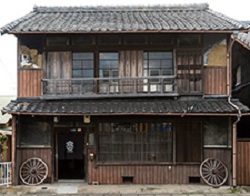
Terakoya Isekatagami
1-10-6 Shiroko, Suzuka-shi, Mie
Website: http://terakoya-kataya.com
Contact: terakoya.kataya@gmail.com
[03]
Masaaki OKOSHI, OKOSHI-KATAGAMI, Inc.
Developing original products by diverting paper stencil designs
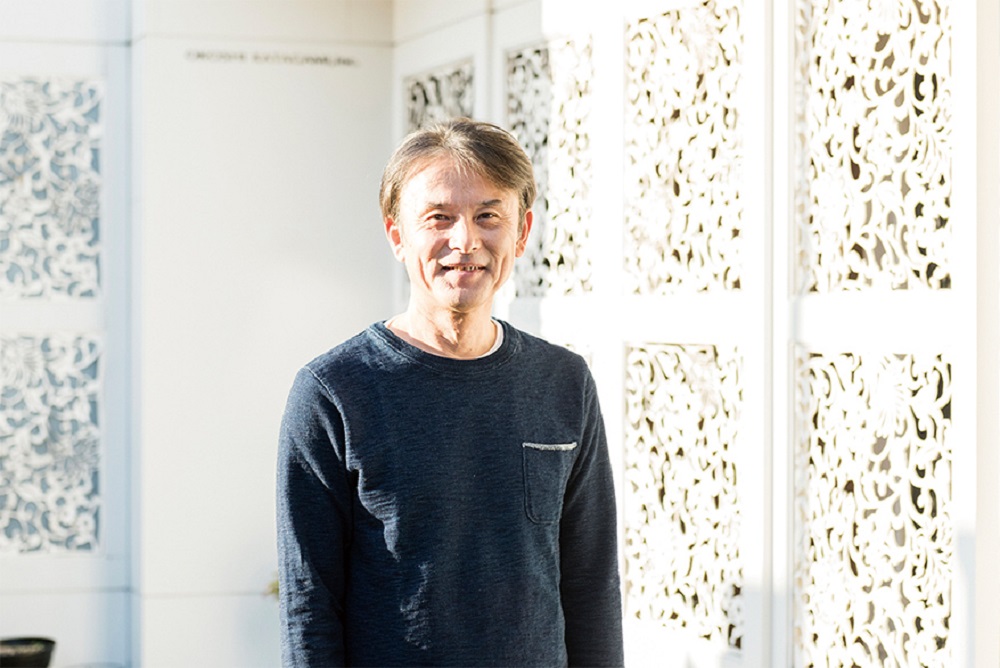
Handling ancient and modern Ise Katagami for many years, Mr. Okoshi works as an aesthetic ‘connoisseur’ and proposes paper stencils that are optimal for specific usage.
Satisfy the demands of the times and preserve the tradition of paper stencils
Established in 1924, OKOSHI-KATAGAMI, Inc. is a pattern dealer with a history spanning 94 years. It functions as both an agency and a wholesaler and undertakes an entire process from handing a painter’s draft and katajigami to a carver to selling the completed stencil of Ise Katagami to the dyer. The company is handling products planning, design patterns, manufactures and sells products and produces Ise Katagami paper stencils reflecting the trends. “Ise Katagami is a material to dye kimono. As western clothes become more common, demand for paper stencils continues to decline. Ise Katagami which has supported the culture of kimono, a Japanese tradition, continues developing products by leveraging their designs in order Ise Katagami to be passed down and remain to be later generation”.
Masaaki OKOSHI explains. He is the third president of the company who has inherited the tradition from his grandfather, the founder, and from his father, who created many different patterns. No pattern or design by Ise Katagami can be represented unless it is carved. His company has a diverse lineup of original products including, among many others, lighting fixtures, decorative panels and other interior goods that leverage the shadow of a combination of light sources, and household goods such as smartphone cases, paulownia boxes and postcards.

Numerous original works are exhibited in the gallery. The beautiful decoration on the wall, with elaborate patterns by Ise Katagami, is eye-catching.
“Based on the concept of adding fun to life through design, we develop products which are close by people’s lives. Ise Katagami enjoyed high demand in the past because kimono was necessary in people’s lives. We will keep offering products that will be needed in the lives of people today.” Mr. Okoshi exhibited these products at Maison et Objet, an interior goods fair in Paris. With the aim of gaining more fans, he envisions entry into international markets, which are highly conscious of the Japanese tradition of beauty.
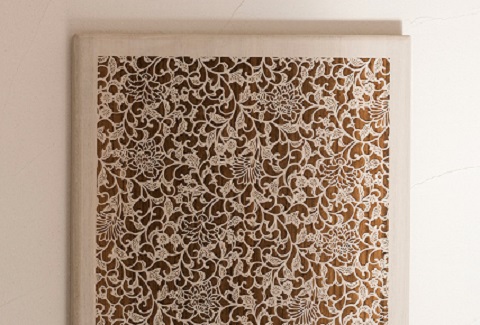
A wooden interior panel
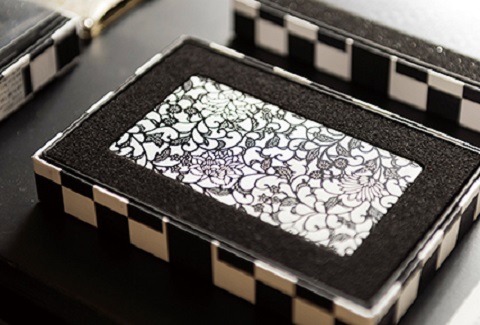
An iPhone case made of aluminum
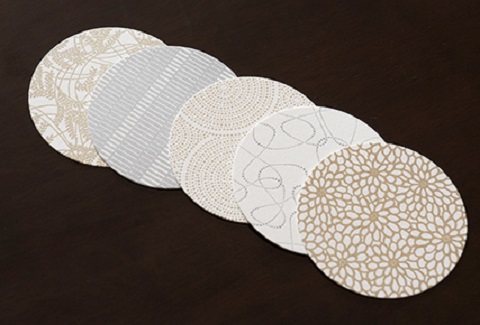
Coasters
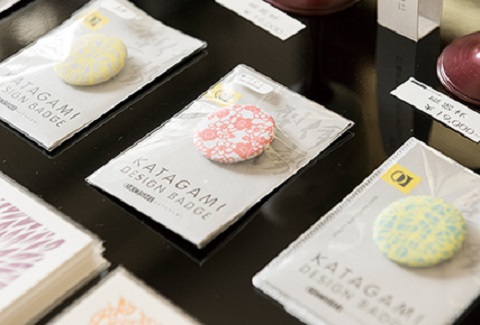
Badges processed with fabric
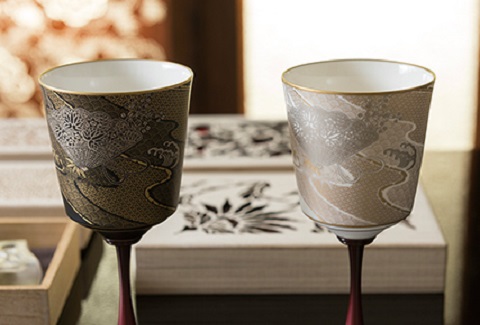
Porcelain cups
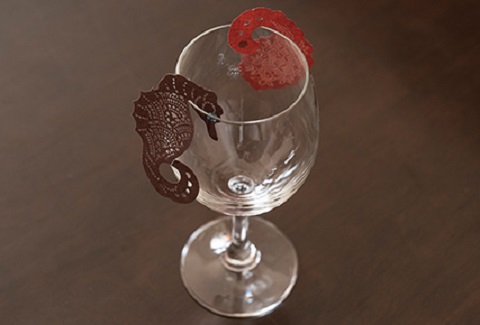
The glass marker may also serve as a bookmark.
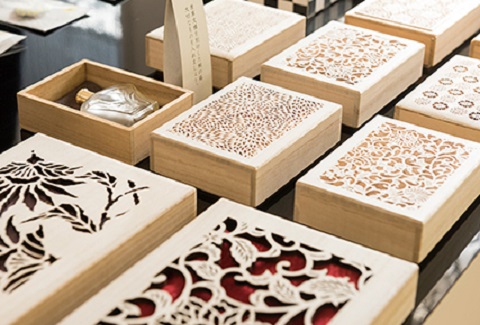
Paulownia boxes carved with arabesque patterns
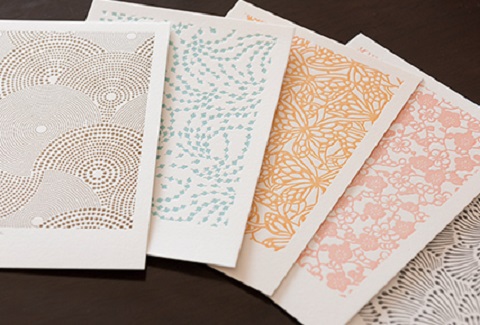
Postcards
The designs of Ise Katagami, the origin of Japanese designs, also attract a great deal of attention from the architectural and apparel industries. More than 10,000 paper stencils are kept in stock in the hall on the second floor of the office building of OKOSHI-KATAGAMI, Inc. Anyone who visits the building for a meeting may see the paper stencils and choose one to suit his/her purposes and taste. They include many historic valuables of Ise Katagami paper stencils that the former presidents used to collect. “The oldest one dates back to the Edo period, while some of the others are considerably newer.
Some of the classic ones that are characterized by the spirit of ‘uramasari’ appear solid-colored from a distance, but delicate processing is evident at close range. Some are elegant and represent the beauty of nature in Japan. Some symbolize a specific animal, pictogram or other unusual subjects. Many designs of Ise Katagami reflect the social conditions of the time or are originated from freewheeling ideas,” says Mr. Okoshi. “the kimono in those days was fashion by itself.” Mr. Okoshi’s words imply that Ise Katagami is a genealogy of fashion from which it is possible to learn the aesthetics of Japanese people.
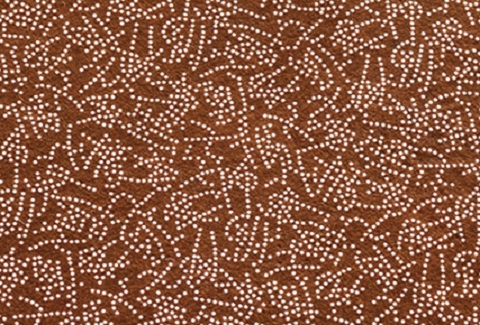
A kiribori paper stencil. The pattern is based on characters representing the Seven Deities of Good Luck.
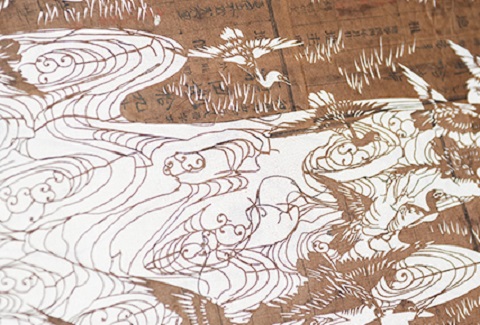
The paper stencil from the Edo period which was made with recycled paper account books.
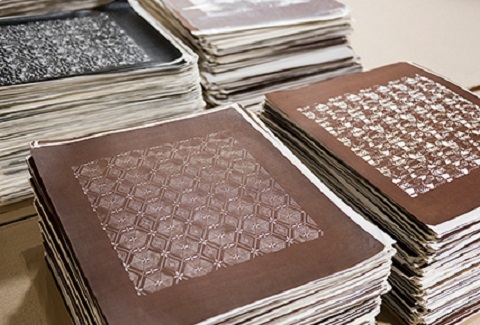
The former presidents collected more than 10,000 paper stencil patterns.
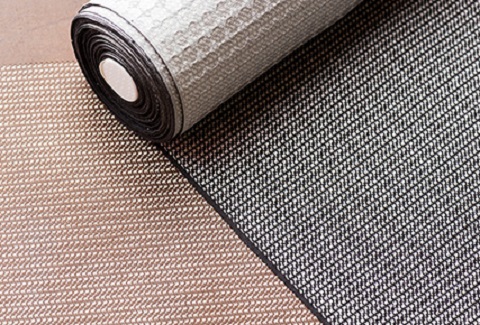
Tanmono (roll of cloth) and the paper stencil that was used to dye the cloth.
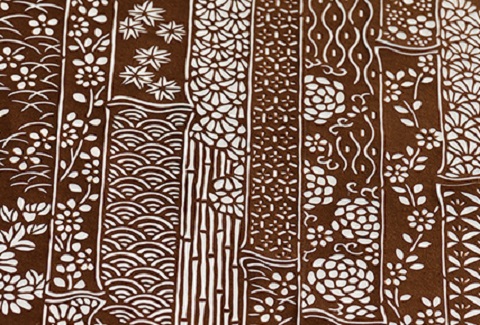
The paper stencil in which different patterns are collaged into bamboo.
It is important to keep changing with the trends of the times in order to pass down the traditions of Ise Katagami to future generations, Mr. Okoshi emphasizes. “We try to identify what is needed in this era. It is important to keep trying and working toward the future, even if there is a need for changes in the form or approach. Tradition would cease to exist if it discontinued.” In the days when people’s values are changing dramatically, OKOSHI-KATAGAMI, Inc. continues to take on challenges.
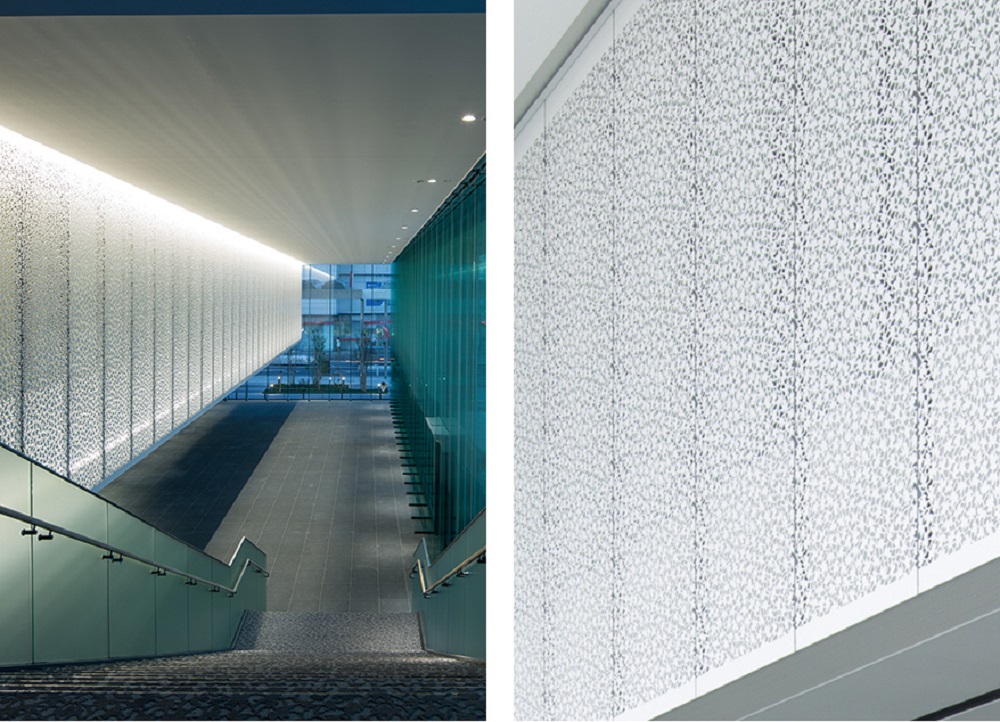
This is a wall decoration at the entrance of the Hyakugo Bank’s Marunouchi HQ building. OKOSHI-KATAGAMI, Inc. designed it, carved its paper stencil and put it into digital data.

Owned by OKOSHI-KATAGAMI, Inc., the stained-glass handbags and plateau in which Ise Katagami patterns are incorporated incorporate patterns by Ise Katagami.

Katajigami supports the beauty of paper stencils’ patterns
Katajigami, one of the features of Ise Katagami, is created to carve patterns onto it. Katajigami consists of pieces of thin Mino-washi paper that are affixed to one another with persimmon tannin. Repeating the process called murogarashi, which involves sun drying and smoking with pine, cedar or similar, makes the sheet of katajigami suitable for use as a stencil, with less unevenness in its thickness. After being removed from the smoking chamber, the sheet of katajigami is aged for several months to nearly a year in a place with low humidity to create a stable condition with little expansion or contraction.
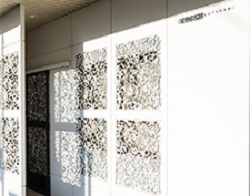
OKOSHI-KATAGAMI, Inc.
27-25 Ejimahonmachi, Suzuka-shi, Mie
Tel: 059-386-0229
Website: https://okoshi-katagami.com

Continued innovations adapted to the changing times are necessary for succession of traditional culture.
Ise Katagami is a traditional industry of Suzuka-shi, Mie and is nationally designated as an important intangible cultural heritage. While different stories are told about its origins, it is said that the practice of using paper stencils to dye kimono already existed in the last days of the Muromachi period. In the Edo period, kamishimo (samurai costume) and komon (kimono with fine patterns overall) came into style, and the technique of carving Ise Katagami to represent more delicate, beautiful patterns developed dramatically. Under the protection of the Kishu Domain, one of the three branch families of Tokugawa, Ise Katagami developed and created the foundations for the kimono culture establishing a strong monopoly system with a nationwide sales network.
Mr. Hajime Ito, a hikibori craftsman, continues striving to hone his outstanding skills through the ultimate level of concentration and endless repetition. Mr. Atsushi Kimura of Terakoya Isekatagami is aiming to develop successors and pursues the establishment of a new business model to restore the good old landscape of his hometown. Mr. Masaaki Okoshi of OKOSHI-KATAGAMI, Inc. seeks to ensure that the local culture is passed down by developing original products reflecting the traditional, beautiful patterns and by selling designs. Despite some differences in their perspectives and approaches, the three interviewees have some things in common: a quest for beauty, respect for their predecessors’ experience and wisdom and a love of their local traditional culture. Adapting to the changing times in terms of lifestyles, values and other aspects, and continueing to pursue innovations to satisfy the diverse needs,, these craftsmen’s novel ideas which support their local cuture will survive the tide of the times in which efficiency and rationality always take precedence.
